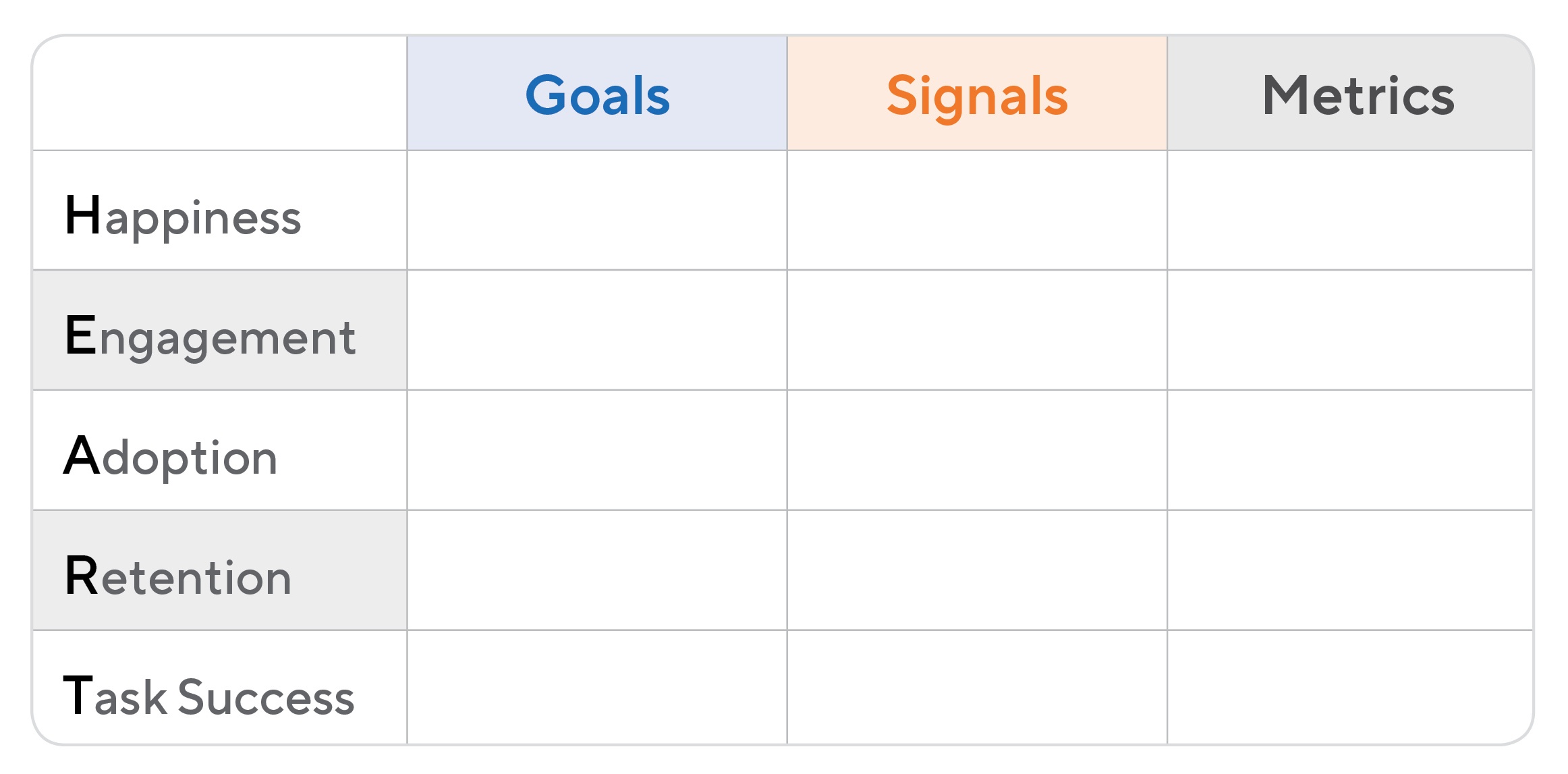What is the HEART Framework?
The HEART framework is a methodology to improve the user experience (UX) of software. The framework helps a company evaluate any aspect of its user experience according to five user-centered metrics. These metrics, which form the acronym HEART, are:
1. Happiness
2. Engagement
3. Adoption
4. Retention
5. Task success
What are the Origins of the HEART Framework?
The HEART framework originated at Google, developed by the company’s lead UX researcher at the time, Kerry Rodden. (Rodden later moved to a UX research role at YouTube.)
Rodden developed HEART to help Google’s UX design teams narrow their focus to only a few key user metrics and to quantify those metrics so they could evaluate them objectively.
How does the HEART framework work?
To use this framework, a team will identify goals, signals, and metrics for each of HEART’s five categories, as the above visual shows. This Goals-Signals-Metrics framework also originated at Google, and it is very straightforward:
Goals: Broad objectives. For Happiness, a goal might be to “increase user satisfaction.”
Signals: Indicators that your team is making progress toward its goals. For Engagement, a sign might be “users are spending more time per session in our software.”
Metrics: Quantifiable data points indicating success or failure. For Retention, a useful metric might be “reduced churn.”
When they have chosen goals, identified the signals to look for, and set quantifiable success metrics for each of the five elements of HEART, a UX design team will have an objective way of learning whether their user experience is positive or needs improvement.
Note: Not all five elements of HEART will be relevant to every feature, product, or website that a UX team wants to quantify. In some cases, the team will use only four or even three of the categories.

Learn more about how to use Google’s HEART framework
What are the Benefits of the HEART Framework?
There are many advantages to using HEART, such as:
1. Valuable trends and business intelligence
Because this framework tracks and measures the same user experience from multiple angles—user happiness, retention, etc.—it can help the company identify essential patterns such as how improving one metric might weaken another.
The team might learn, for example, that when it focuses resources on increasing user adoption, it also lowers the product’s happiness score. This information can help the team make adjustments in how it builds and markets its products.
2. More strategic focus
A key reason Kerry Rodden created HEART was to help Google’s UX designers focus on a handful of important areas of the user experience and tune out the rest. She saw that many designers and researchers were becoming overwhelmed with the massive amounts of raw usage data.
By using this framework, a team can devote its attention and energy to just those areas of the user experience they believe will have the most significant strategic impact on the product and the company’s bottom line.
3. A more predictable ROI
The data that UX and product teams will generate over time using the HEART framework can uncover valuable insights about which of these five elements most significantly and consistently lead to increased revenue.
If the company sees over time that investing in boosting retention adds more to the bottom line than investing in engagement, the UX or product team will know where to places its resources on a new product if both engagement and retention rates are low.
Download Product Success Metrics ➜
Who Should Use the HEART Framework?
The HEART framework was designed for software UX teams. The framework’s five elements and the Goals-Signals-Metrics model that it works with are still most logically suited to user-experience designers and researchers.
But HEART can also be a useful framework for product managers—specifically to help them weigh competing projects to determine which offer the most strategic value. Product teams can use HEART as a prioritization framework when they have more ideas or requests for features and enhancements than their cross-functional team can work on in a given timeframe.
Learn proven strategies to prioritize your product team’s work: 
